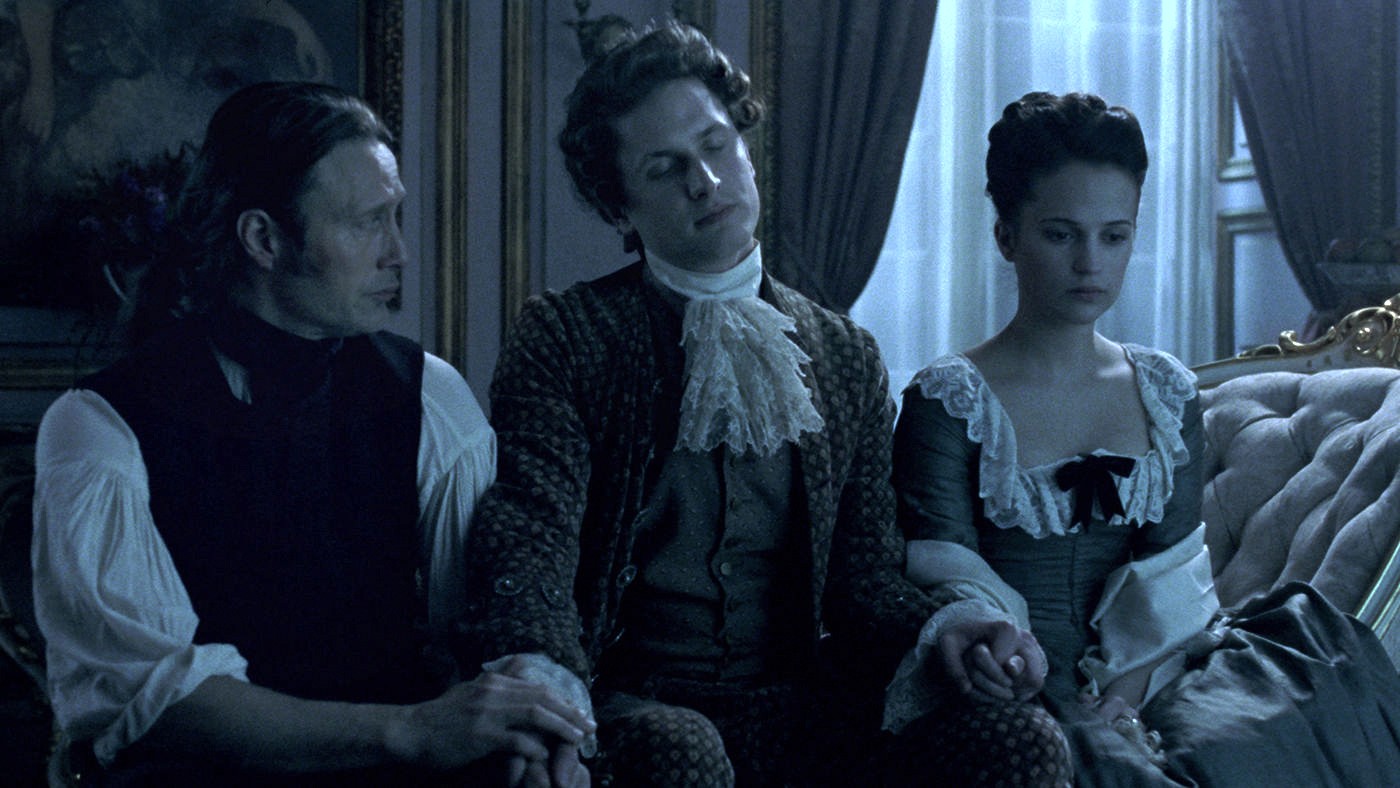Costume dramas are a risky business. Either they’re artificial and implausible, or the novelty of lace-sleeves, elaborate hairdos, and expensive props simply overshadows the plot and the acting. There are times, however, when this isn’t the case; when the historical background is the focus, and costume only succeeds in augmenting the film’s veracity.
Set in the 18th century, at the court of the mentally ill King Christian VII of Denmark, A Royal Affair focuses on the romance between his queen, Caroline Mathilde, and the royal physician, Johann Friederich Struensee. The film is, in fact, historically accurate. It is surprisingly astute both in its portrayal of historical figures, and adherence to detail; although, to be fair, this may be because the details of their affair were so sordid as to require no embellishment. The Enlightenment is the focus of this feature, and Struensee’s attempt to bring modernity and new freedoms to Denmark are clearly portrayed. However, while his humanitarian reforms—the abolition of torture during interrogation, and the establishment of freedom of the press—were outstanding, this is also a film about the impermanence of change, the precariousness of power, and the price of transgression in a highly structured society. Though the emphasis on the love affair outshines the importance of both the Enlightenment and of the aforementioned themes, the latter can still resonate with a modern audience, in a world where social rules, and attempts to upheave the status quo, have marked our lives.
A Royal Affair, Denmark’s nominee for Best Foreign Film at both the Golden Globes and the Oscars, includes excellent performances by headliners Mads Mikkelsen, Alicia Vikander, and Mikkel Følsgaard. Facial expressions truly bear noting in this film, with a great deal of significant moments having little or no dialogue, and resting solely upon the actors’ commendable abilities to capture a wide range of meaning in the narrowing of a gaze, or the twitch of a lip. Horror, loss, joy, and sorrow are expressed without a single spoken word, which lends sincerity to the events, and depth to the historical characters portrayed.
What is perhaps most extraordinary about this film, is that much of the substance and feeling is translated not simply through acting, but through skilful use of “movie magic.” From a cinematographic point of view, A Royal Affair accomplishes a great deal through clever shots and visual tricks. The cheesy, slow-motion dance between two characters in love, or the fragmented flashback to the moment Struensee first sees the Queen successfully add to the narrative. Light also plays a major role in establishing the atmosphere of this piece. Perhaps because the film concerns the Enlightenment, the lighting takes on even more meaning. Grey morning light filtering through drawn drapes into a dark room, the flicker of candles casting jumping shadows along the walls; immense attention to such details creates beautiful tableaus and a heightened emotional tone. However, as lovely as the period music is, it often feels disembodied and out of place, as if it were emanating from nowhere, simply edited into the film out of necessity.
Thematically and emotionally, this film astounds. Costume dramas, and other genres that require extras often disappoint since they rely too heavily on their budget to create a success. A Royal Affair, meanwhile, manages to awe with its lovingly fashioned décor and dress, but also reels in viewers. I’m not ashamed to admit it—this film managed to move me to tears.







